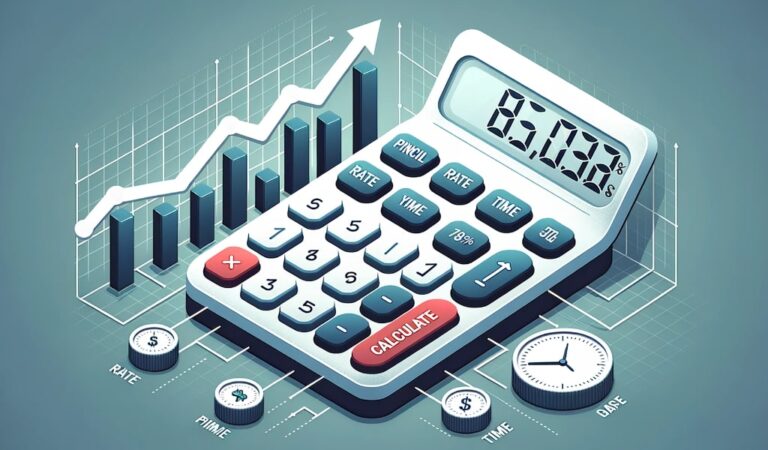When it comes to understanding the magic of financial growth, knowing how to calculate compound interest is crucial. Compound interest is the interest you earn not just on your initial investment (or principal) but also on the interest that accumulates over time.
To understand how to work out compound interest, you’ll first need to familiarize yourself with it’s formula:
A = P(1 + r/n)nt
A is the future value of the investment/loan, including interest.
P is the principal investment amount (initial deposit or loan amount).
r is the annual interest rate (in decimal form, so 5% would be 0.05).
n is the number of times interest is compounded per year.
t is the number of years the money is invested or borrowed for.
Now that you’ve familiarized yourself with the formula, let’s break down the math behind compound interest. We will explore how to calculate it for various compounding frequencies.
How to Calculate Compound Interest on Different Compounding Frequencies.
There are five common frequencies used in working out compound interest. They include; annually (once a year), semi-annually (twice a year), quarterly (four times a year), monthly (twelve times a year), and daily (every day).
Now let’s explore each frequency with an example.
1. Annually (Once a Year)
If interest is compounded once per year (annually), “n” would be 1.
Example:
You deposit $1,000 in a bank account offering a 5% annual interest rate, compounded annually for 2 years.
Using the formula:
P = $1,000
r = 0.05
n = 1
t = 2
So the formula would be: A = 1000(1 + 0.05/1)1×2
The future value of the investment after 2 years when interest is compounded annually is: $1,102.50.
2. Semi-Annually (Twice a Year)
If interest is compounded twice a year (semi-annually), “n” would be 2.
Example:
Using the same $1,000 deposit and a 5% annual interest rate, but this time compounded semi-annually for 2 years.
So the formula would be: A = 1000(1 + 0.05/2)2×2
The future value of the investment after 2 years when interest is compounded semi-annually is: $1,103.81.
3. Quarterly (4 times per Year)
For quarterly compounding (four times a year), “n” would be 4.
Example:
Again, with a $1,000 deposit and a 5% annual interest rate, compounded quarterly for 2 years.
n = 4
So the formula would be: A = 1000(1 + 0.05/4)4×2
The future value of the investment after 2 years when interested in compounded quarterly is: $1,104.49.
4. Monthly (12 times per Year)
If interest is compounded monthly, n would be 12.
Example:
With a $1,000 deposit and a 5% annual interest rate, compounded monthly for 2 years.
n = 12
So the formula would be: A = 1000(1 + 0.05/12)12×2
The future value of the investment after 2 years when interest is compounded monthly is: $1,104.94.
5. Daily (365 times per year or 366 times in a leap Year)
For daily compounding, n would be 365 (assuming a non-leap year).
Example:
A $1,000 deposit at a 5% annual interest rate, compounded daily for 2 years.
n = 365
The formula would be: A = 1000(1 + 0.05/365)365×2
Future value of the investment after 2 years when interest is compounded daily is: $1,105.16.
To summarize the above information, the table below displays the different outcomes using the same starting investment of $1,000:
| Compounding Frequency | Future Value ($) |
|---|---|
| Annually | $1,102.50 |
| Semi-Annually | $1,103.81 |
| Quarterly | $1,104.49 |
| Monthly | $1,104.94 |
| Daily | $1,105.16 |
As you can see, the frequency with which interest is compounded has an impact on the final amount, with daily compounding yielding the highest value.
Conclusion
Understanding how to calculate compound interest is an essential tool in the world of finance and personal money management. By grasping this concept, you can better assess the growth potential of your savings and investments.
Whether it’s annually, semi-annually, quarterly, monthly, or even daily compounding, the more frequently your interest is compounded, the more you earn in the long run. Embrace the power of compound growth and let your money work for you!
Also Read: “The Power of Compound Interest” to fully understand this concept.
Remember, while compound interest can work wonders for savings and investments, it can also quickly increase the amount you owe on loans or credit cards. Always be aware of compounding frequencies when borrowing or investing money.


